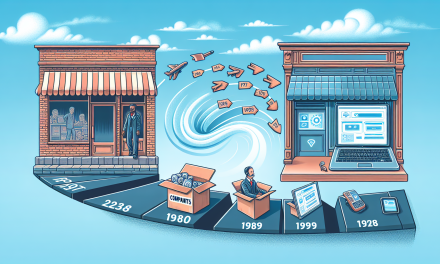Table of Contents
- What is Customer Service Excellence?
- Why is Customer Service Excellence Important?
- Key Components of a Customer Service Excellence Training Program
- How to Measure Customer Service Excellence
- Implementing the Training Program Effectively
- Challenges in Customer Service Training
- FAQs
- Conclusion
What is Customer Service Excellence?
Customer service excellence refers to the practice of providing exceptional assistance and support to customers before, during, and after their purchases. It embodies creating positive experiences that not only meet customer expectations but exceed them. In today’s competitive landscape, businesses that excel in customer service foster loyalty and cultivate long-lasting relationships with their clientele.
Defining Features of Customer Service Excellence
- Responsive communication
- Empathy and understanding
- Personalization of service
- Consistency across various channels
- Proactive support and problem-solving
Why is Customer Service Excellence Important?
To thrive in the modern market, organizations must embrace the significance of customer service excellence. When businesses prioritize providing outstanding service, they reap numerous benefits.
Enhancing Customer Loyalty
Customers who experience exceptional service are likely to return. They develop trust and establish a commitment, thus translating into repeat business. In fact, loyal customers often become brand advocates, spreading the word about their positive experiences.
Boosting Brand Reputation
A company recognized for its dedication to customer service builds an admirable reputation. When word gets around about how you treat your customers, it can distinguish you from competitors. Additionally, this reputation can lead to an increase in customer referrals.
Driving Revenue Growth
According to numerous studies, an increase in customer satisfaction positively correlates with revenue growth. Businesses that invest in customer service can expect higher sales figures due to increased customer retention and positive reviews.
Key Components of a Customer Service Excellence Training Program
An effective customer service excellence training program equips employees with essential skills and strategies to deliver superior service. Let’s explore some critical components of a successful training program.
1. Communication Skills
Effective communication is fundamental in customer service. Employees should learn how to convey information clearly and articulately while also developing active listening skills. This enables them to understand customers’ needs and respond appropriately. Furthermore, training in non-verbal communication can also enhance interactions.
2. Emotional Intelligence
Emotional intelligence plays a vital role in customer service. Employees trained in recognizing and understanding their emotions as well as those of others can interact more empathetically. Consequently, this strengthens the connection with customers.
3. Problem-Solving Techniques
Every customer service scenario holds the potential for challenges. Training should empower employees to think critically and develop innovative solutions to address customer issues. By fostering a solution-oriented mindset, employees can efficiently resolve concerns and ease customer frustrations.
4. Product Knowledge
Employees must possess in-depth knowledge of the products and services offered. This equips them to provide accurate information and recommendations. Regular product training updates will help them stay informed about new features and services, further enhancing their capability to assist customers.
5. Handling Difficult Situations
Whether it’s dealing with an irate customer or a complex complaint, employees need training on how to manage such situations with grace and professionalism. Role-playing scenarios can provide practical experience that prepares employees for real-world challenges.
How to Measure Customer Service Excellence
Implementing a training program is just the start; measuring its effectiveness is equally crucial. Here are several strategies to assess the impact of customer service excellence.
1. Customer Feedback
Collect feedback through surveys, either post-interaction or periodically. Analyze this data to identify customer satisfaction trends and areas for improvement.
2. Net Promoter Score (NPS)
The NPS indicates how likely customers are to recommend your business to others. A high NPS signifies satisfied customers and effective service, while a low score can pinpoint issues that require attention.
3. Customer Effort Score (CES)
The CES measures how easy it was for customers to interact with your business. The lower the effort required, the higher the potential for customer loyalty.
4. Employee Engagement
Engaged employees often provide better service. Assess employee satisfaction and engagement levels to evaluate potential correlations with customer service results.
Implementing the Training Program Effectively
Successfully implementing a customer service excellence training program requires a strategic approach.
1. Set Clear Goals
Define the objectives of the training program. Whether it’s improving response times or enhancing product knowledge, establishing clear goals provides a roadmap for success.
2. Engage Leadership Support
Management’s commitment is instrumental in fostering a culture of excellence. Involving leadership ensures the prioritization of customer service throughout the organization.
3. Continuous Learning
Customer service excellence is an ongoing journey, not a destination. Regular training sessions, workshops, and refreshers will keep skills sharp and knowledge up to date.
4. Embrace Feedback and Adapt
Encourage input from both employees and customers. Using feedback to adapt training content and methods ensures the program remains relevant and effective.
Challenges in Customer Service Training
While designing a customer service excellence training program proves beneficial, challenges may arise along the way. Understanding these potential obstacles can facilitate a smoother process.
1. Resistance to Change
Employees may resist new methods or techniques if they are used to existing practices. Open communication about the benefits of training, as well as soliciting input, can help ease this transition.
2. Time Constraints
Finding the time for training amidst daily responsibilities can be tough. Balancing training sessions with work demands requires strategic scheduling and perhaps introducing micro-learning sessions to reduce disruption.
3. Maintaining Consistency
With various departments and shifts, ensuring consistent training can be difficult. Design standardized training materials and practices that all employees receive, regardless of when or where they work.
FAQs
What is the ultimate goal of customer service excellence training?
The primary aim is to equip employees with the skills and knowledge necessary to provide exceptional service, thereby boosting customer satisfaction and fostering loyalty.
How can I find a suitable program for my team?
Assess your team’s specific needs and objectives, then look for programs tailored to those requirements. For valuable resources, consider exploring the Customer Service Excellence Certification & Training Program.
What type of ongoing support is available after the training?
Post-training support may include refresher courses, access to resources, mentorship opportunities, and performance assessments to ensure skills remain relevant and effective.
Conclusion
In conclusion, investing in customer service excellence is vital for any thriving business. A solid training program not only empowers employees with essential skills but also cultivates a company culture centered around great customer experiences. As businesses continue to evolve, enhancing customer service through structured training, like the Customer Service Excellence Certification & Training Program, becomes increasingly indispensable.
Moreover, by understanding the importance of customer-focused management strategies, businesses can master advanced customer service management techniques, which ultimately lead to greater business success. For further insights, explore articles on Mastering Advanced Customer Service Management for Business Success and Enhancing Business Success Through Customer-Focused Management Strategies.





